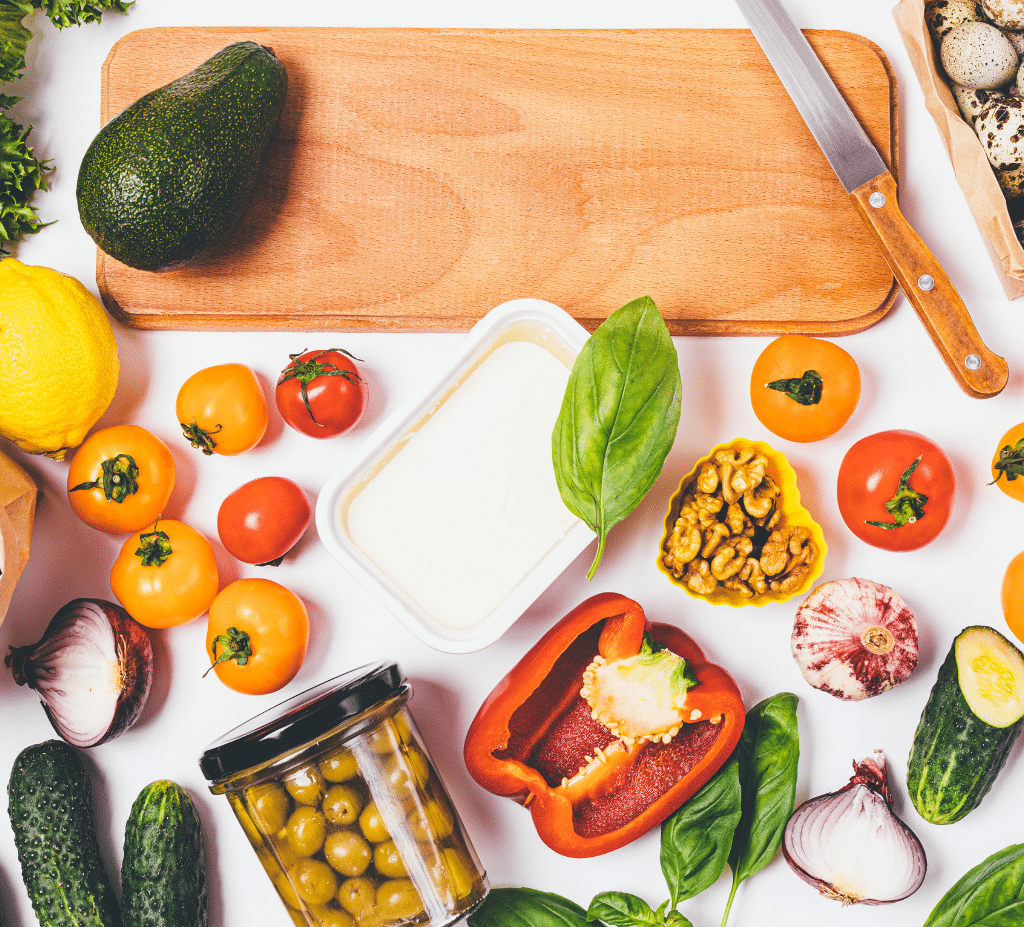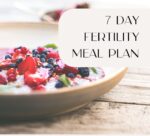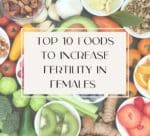Good nutrition touches almost everything we talk about. Having fun, being in a good mood, socializing, concentrating, exercising, vacationing – all these can involve eating foods and drinking beverages. So, when we make healthier choices daily, this can helps us in all aspects of our lives. Good nutrition refers to keeping our cells happy. Our cells make up our organs that make up our body and mind. The cells in our body must grow, divide, transport goods, get rid of toxins and then they need to die and be disposed of – and they must do all this without us being aware. This allows for digestion, metabolism, breathing, exercising, thinking etc. Healthy eating and a healthy lifestyle are all about keeping these things working in proper order. When are cells are not working well, our organs and our body do not work well.
So, here is a list of the top things you need to know to help keep your body as healthy as you can.
1. Macronutrients, your body needs them all.
There are 3 main macronutrients in food and these are protein, fat, and carbohydrates. They are called macronutrients because our body needs them in large amounts. They also are the only things that give our body energy, otherwise known as calories. Fruits, vegetables, and grains contain mainly carbohydrates while meats contain mainly protein and oils contain only fat. Carbohydrates breakdown into glucose which all of our cells needs to function efficiently. Some organs, like our brain, use predominantly glucose as an energy source. Fats breakdown into cholesterol and proteins break down into amino acids and sometimes glucose. All these together allow our body to function in its optimal state.
2. Water is Essential
The body needs water to thrive, period. Water is needed to digest our food, for blood to flow and for waste to be removed. Water is needed by each cell to work. Water is taken into the cell to function and is used to remove waste from the cell, into the blood and out our body. Water helps to digest our food and move it into the blood, distribute it through our body, get it into the cell and then back again! This is a lot of work and water is needed for all of it.
3. Eat Vegetables
Studies show that folks who eat more vegetables are less likely to have chronic disease, cancer, age related illnesses and digestion issues. Study after study continue to conclude that eating your vegetables is linked to being at optimal health. Eat them in whatever way you can! Raw, blended, steamed, boiled, roasted or pureed – whatever works best for you, stick with it and your body will thank you.
4. Eat more Fibre
Less than 10% of most Western populations consume adequate amounts of whole foods and dietary fibre1. Fibre helps with improved weight control, healthy aging, digestive and gastrointestinal health, certain types of cancer prevention, regularity, improved mood and prevention chronic health conditions such as Type 2 Diabetes and cardiovascular disease. Fibre from whole grains, fruits, vegetables, seeds and nuts all contribute to improved overall health.2
5. Healthy Eating is a Lifestyle, not a Diet
Quick fixes, diet trends, elimination diet, detox diets are all aimed at short term gains or fixes. Healthy living is not a short-term goal. There are no quick fixes that allow your body to forever stay in a state of health. So take on an eating pattern that you can be happy with everyday! You deserve that! And yes, there will be days that you choose not the best options, but that is ok. If you are choosing the healthier options most often, you are winning. Since food decisions need to be made everyday for the rest of your life, do your body a favour and make the healthy choice.
6. Be Aware of Added Salt or Sugar
Refined sugars and added salt are in many foods and both these, in large amounts, contribute to poor health outcomes. Cut down on salt and sugar, both of which contribute to unhealthy conditions in your body
7. Know your Fats
There are good fats and there are not-so-good fats. The good fats help prevent disease and maintain health while the not-so-good fats do the opposite. Healthy fats include unsaturated fats, such as polyunsaturated and monounsaturated fats. These include plant-based oils like olive oil, flaxseed oil, canola oil and safflower oil. Saturated fats come from animal based fats and should be consumed in moderation and trans fats, which come from processed foods, should be avoided.
8. Choose Whole Foods more often
Convenience is important in our busy lives and this is understandable. Choosing convenience foods happens however, making whole foods your choice more often is the healthier option. These foods have been studied repeatedly and keep coming up with the same result – they help maintain a healthy body and a healthy mind. Whole foods are foods that have not been processed or refined or have had ingredients added to them. These retain their fibre, phytochemicals and nutrients that can be removed during processing. These include fruits, vegetables, nuts, legumes, seeds, whole grains, meat, fish and eggs
9. Read the Nutrition Label
The nutrition label is a guide to help you make better choices when choosing one products over another. When looking for cereal, for example, you can compare the sodium, sugar and fibre content between the brands and this can helps you choose the healthier option. Knowing how to read them makes is a no-brainer when deciding which food to bring home and enjoy.
10. Vary your Colours
Colours are key to providing all those wonderful nutrients our bodies need, on a cellular level, to say in tip top shape. Vitamins, minerals, antioxidants and phytochemicals are wrapped up in foods of all different colours. To help you meet your nutrient requirements, vary the types of foods you eat, as some are higher in certain nutrients than others. Over the course of a week, when you vary the colours on your plate, you are varying the quantity and quality of nutrients you eat. The more colour, the more variety this is key to keeping our cells, and our body, healthy.
11. Eat Mindfully
There is a lot of talk about mindful eating and for good reason. This means that when you, you do so with intention, awareness and focus. Awareness such as: are you enjoying what you are eating? Is your body still hungry? At what point during your meal are you feeling satiated? Focus on things like, are you eating your food with enjoyment or are you eating it quickly and without focus? Are you engaged with your senses? All these things are important to be aware of so you can ensure you are eating because your body or mind wants to eat, not because of other reasons, such as boredom or stress or peer pressure. When using this technique, it allows you to develop awareness of your experience, your cravings, your feelings about food and your physical cues. This allows for the development of a healthier relationship with the food you eat.
12. Balance your Meals and Snacks
When cooking, planning and preparing a meal, I am obsessed with making sure it is balanced. This means that I have the appropriate portions of vegetables, whole grains, proteins and healthy fats, in my plate. Aim for half your plate to be vegetables and/or fruits, ¼ of your plate to be your grain of choice and the remaining ¼ of your plate to be the protein of your choice. This balance helps to keep you full longer and prevents cravings, binging and weight fluctuations.
To bring it all together, here are some great meal examples.
Breakfast: oatmeal (whole grain) + berries (fruit) + nuts/hemp hearts/chia seeds (protein and healthy fats).
Lunch: Quinoa (whole grain) + chicken breast (protein and healthy fats) + roasted carrots/beets/Brussel sprouts (vegetables and healthy fats).
Dinner: green salad (vegetables) + grilled salmon (protein and healthy fats) + brown rice (whole grains).
Start today by making small changes in your daily routine and overtime, you will see big changes in our lifetime routine
13. Take a Vitamin D supplement
In the winter months between November to May, in Canada, it can be very difficult to get enough Vitamin D from the sun or from our diet. Reports indicate that over 90% of our population does not get enough Vitamin D from foods to meet their needs. Vitamin D supports bone health for kids to the elderly and studies report it is involved in many aspects of cellular development and growth.
In Summary,
These 13 nutrition tips are simple steps in helping you towards improving your health. This list is not exhaustive for all aspects of health such as exercise, sleep habits, stress management and personal relationships, however it can lead you towards a healthier nutrition plan which is one positive step in the direction of good overall health.
References
- Dreher, Mark “Whole Fruits and Fruit Fiber emerging Health Effects” Nutrients 2018, https://www.mdpi.com/2072-6643/10/12/1833
- Veronese et al. “Dietary Fiber and health outcomes: an umbrella review of systematic reviews and meta-analyses. The American Journal of Clinical Nutrition. Volume 107, Issue 3, March 2018, Pages 436–444. https://academic.oup.com/ajcn/article/107/3/436/4939351?login=true





Leave a Reply
You must be logged in to post a comment.